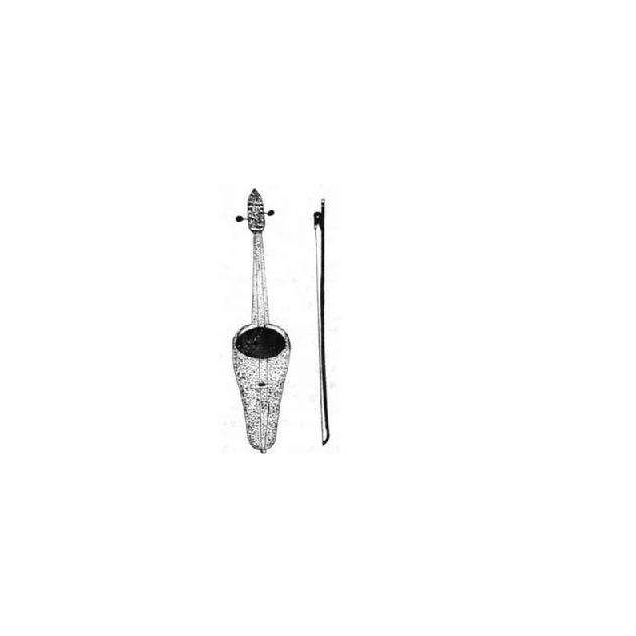Kjak overview
 Keyak (pinyin: kè yà kè) is a bow-drawn stringed musical instrument of the Kirgiz people. Chinese has been translated as Ke Ya Ke. Popular in Xinjiang Uygur Autonomous Region Kyzilsu Kirgiz Autonomous Prefecture and Ili Kazakh Autonomous Prefecture Turks, Zhaosu, Emin and other places.
Keyak (pinyin: kè yà kè) is a bow-drawn stringed musical instrument of the Kirgiz people. Chinese has been translated as Ke Ya Ke. Popular in Xinjiang Uygur Autonomous Region Kyzilsu Kirgiz Autonomous Prefecture and Ili Kazakh Autonomous Prefecture Turks, Zhaosu, Emin and other places.The traditional kejak, with a total length of 62 cm to 75 cm, is similar in shape to a short spoon, and the body is made of a whole section of pine or mulberry. The resonance box is spoon-shaped, the upper part is wider, the inner cavity is exposed, and the lower part is covered with camel lambskin or sheepskin. The headstock is simple and unadorned, with a flat top and a peg on each side. The neck is short, narrow at the top and wide at the bottom, with a fingerboard on the front and no grades. There are bridges and horses on the leather surface, and two bundles of ponytail strings. The Xinjiang Kizilsu Kirgiz Autonomous Prefecture Cultural and Art Troupe reformed and made a keyake. The piano box still maintains the traditional form. Zhang two silk strings. The production process is fine, and the sound is pure and round. It can be used for solo, ensemble or to accompany long narrative poems and folk songs.
Famous pieces include "Felzat", "Olayu", "Ulla", etc.
- Chinese name:Kjak
- Chinese translation:Kejaco
- popular area:Turks, Zhaosu, Emin and other places
- pinyin:kè yà kè
overview of other similar instruments
- sanyanxiao overview
- Daguangxian overview
- Leiqin overview
- hahao overview
- yandundagu overview
- Han Xiaozheng overview
- Fang Xiang overview
- guanzi overview
- zhuqin (Dao Qin) overview
- zhuiqin overview
- bangzi overview
- three-stringed piano overview
- Gehu overview
- xiao overview
- xiaokonghou overview
- Konghou overview
- Sheng overview
- suona overview
- hulusi overview
- gushao overview
 渝公网安备 50010702504639号
渝公网安备 50010702504639号